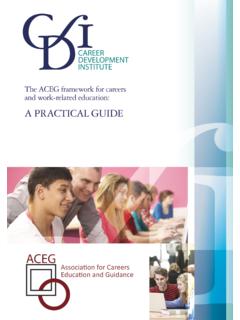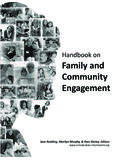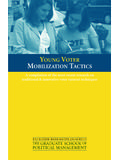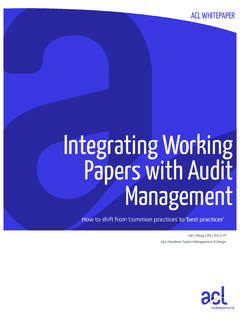Transcription of Assessment Practice Standards - proceduresonline.com
1 A Practice development guide to understanding children s needs and family situationsAssessment Practice StandardsBolton can be proud of a long history of effective multi-agency working to safeguard children and young people . The development of the nationally acclaimed Child Concern Model did much to improve Practice across all levels of vulnerability and to aid practitioners in their efforts to intervene in a coordinated way. Bolton s Framework for Action and effective use of the Common Assessment Framework (CAF) builds on strong intra-agency working to ensure any child who requires a multi-agency response receives a consistent and meaningful intervention. Bolton has responded positively to national legislative drivers for change, such as Every Child Matters, Supporting Parents and Safeguarding Children, The Protection of Children in England: Action Plan, the government s response to Lord Laming, Hidden Harm and Think Family, all of which demand we work across services in an integrated way to meet the needs of the whole family.
2 Despite this foundation of effective Practice there is still a need for some families to receive a specialist service from social care, including enforced interventions arising from an evidenced based Assessment of the whole family. Such assessments whilst coordinated by Children s social care will involve close working with and sharing of information with and from partner agencies. These families are often the most resistant to services and hard to engage in meaningful change. They can pose a challenge to front line social workers and support staff that are tasked with forming an honest and non-collusive relationship with parents, young people and children. effective social care is built on a foundation of strong and trusting relationships between workers, families and partners. In Bolton we have professional practitioners who work hard to achieve positive outcomes. We are impressed by the work of managers who through day to day observation and best use of supervision, identify and support the development needs of staff, ensuring they are able to engage, assess and intervene in a meaningful and effective Stay Safe Management Team, supported by the Department Management Team and the Bolton Safeguarding Children Board, are committed to supporting best Practice across the service, recognising the challenging and demanding nature of the tasks undertaken by our managers and staff.
3 Creating this guide is one of the ways we aim to support best Practice . It has been developed by Bolton s social care staff and managers, so is rooted very much in local Practice . Decisions made on behalf of children must be based on sound evidence, collated within an effective working relationship between the professional and are proud of the child protection work in Bolton and hope this guide is one way of investing in our staff and their supervisors. Best wishesM. Asquith J. DalyDirector of Associate Director ofChildren s Services Staying SafeForwardWhat is it?It is eight key Standards which apply to all assessments and aim to: Develop consistent, confident, collaborative, questioning and authoritative Assessment Practice Embed and grow this across teams, services and partners in BoltonThe guide is: Generic: the eight Standards and benchmarks apply to all assessments Flexible: but needs to be used in a flexible way by different people for different purposes in different contexts Assessment is continuous and is used in no particular order: although the Standards are presented in a sequence, in reality you will re-visit these Assessment Standards throughout the life of the case Ongoing professional development: the meaning of items will change as workers become more experienced and take on more complex Assessment roles and responsibilities Inter-connected Standards .
4 The eight Standards need to be seen as mutually dependent and interactive. The inter-connectedness strengthens the overall Assessment Dependent on the professional s skill, timing, honesty and commitment to use it. There is nothing magic in the tool itself it s all about how you use it!Practitioners as agents of change Investing in your own development is the part of the journey to becoming an effective agent of change whether as a front line practitioner or a supervisor. Without investing in our individual knowledge, skills and development we risk being entrapped in less flexible, less collaborative and less meaningful systems that are Practice change agents use their knowledge, values and relationship skills to achieve accurate and balanced assessments that enhance the prospects of improvement in the lives of children and their families. The aim of this Practice guide is to enhance our capacity to deliver: Whole families strategies Making a difference for families in Bolton Leading Practice Being connected Practitioner as change agent Making sense and understanding needs Doing with rather than to Owning quality Self as resourceMaking the best use of myselfNow more than ever this is a time for investing in your own continuous professional development, this constitutes towards a competent and confident workforce, building on Bolton s history of innovative Practice .
5 Becoming a proud and authoritative professional involves a shared responsibility and proactive approach from both you and your organisation. This Practice guide is one of the very practical ways in which Bolton Children s Services is supporting your professional development. There are a range of ways you can use this guide. Who might use it? Individual workers Co-workers Multi-agency partners Supervisors TeamsWhen might you use it? Individual Worker: Review your Assessment strengths and developmental needs Reflect on a particular element of Assessment in relation to a case where you may identify gapsCo-workers Develop a common language and shared focus for working together on assessments As a basis for learning from each other and offering mutual feedbackWorking with multi-agency partners in Assessment Challenge assumptions about Assessment approaches Understand how different professionals knowledge and skills contribute to Assessment Enrich and improve partnership practiceSupervision Identify worker s Assessment strengths and development needs Develop shared understanding about what good looks like in assessments Improve the quality of Assessment supervisionTeam Develop a shared understanding of what good assessments look like Further build and embed a culture of high quality assessments Now use
6 These Standards and descriptors to consider whether: You feel challenged by this standard or the particular elements within it you are not confident about this (C) Your Assessment Practice is patchy around this standard or particular elements within it you can do it in some cases, but not in others (P) You feel strong around the standard or elements within it and are confident you do this, unless it is a very difficult situation (S) Using the guideAssessment Practice Standards 1 Focus of Assessment 1. Focus of Assessment 2. Your engagement and participation of family members 3. Your role in working with other agencies during Assessment 4. Information gathering 5. Evidence based analysis 6. Your supervision helps the worker do a good Assessment 7. Assessment is fit for purpose 8. Action planning and outcomes 8 1. Focus of Assessment You are clear on the focus and plan your Assessment before you start You understand the legal and policy mandate that underpins your Assessment activity You understand the elements of the Assessment frameworks you use You understand what a partnership approach to Assessment means You are clear about the reasons and focus for this Assessment You consider that the child is safe from harm at every stage of the Assessment You are clear about the process.
7 Stages and timescales for this Assessment and you have a plan about what you are going to do and when you are going to do it You are clear what information you need to collect for the Assessment You are clear about what this Assessment must achieve You are clear how you will remain child-centred and family-focused during this Assessment You have thought about where you feel confident in this Assessment , where there may be potential pitfalls for you and how you can address these 2. You engage and seek to maximise the participation of family members You explain to family members why there needs to be an Assessment , what needs to be covered and the process. You provide written information to families about this You are clear about what is negotiable when making agreements with the child / young person and the consequences of nonnegotiable areas are made explicit You are persistent in engaging all the significant adults, children and young people You include families and children / young people in the Assessment .
8 Seeking their views You check out any possible barriers to the families / child participating in the Assessment learning disability / culture / language / mental illness and identify ways of making the Assessment process accessible for family members You keep families informed about the progress of the Assessment and the reasons for any change in focus or delay You share relevant information appropriately and sensitively with family members You present and act professionally and use understandable language You listen and accurately record how and what family members tell you You spend time with the child alone in a suitable place (with parental consent, where appropriate) and take the child s story, needs, views and feelings seriously You develop a real sense of what a day in the life of this child is like, within the family. Especially how safe the child feels You are honest with the child / young person and regularly check out their understanding of the Assessment process, consulting with the child about possible recommendations and plans You interview each significant adult in their own right and involve them in the development of the plan 3.
9 You are clear on your role in working with other agencies during Assessment You are clear on the role and tasks of other professionals involved in the Assessment You communicate with other professionals during the Assessment process in order to: share, clarify and evaluate information; make use of other professional s expertise; and develop a shared understanding of the child s situation You prepare your information and its presentation for multi-agency meetings in a way that considers the needs of all the members You value the contribution of other agencies, and use multi-agency meetings to listen to their information and consider the implications for your Assessment You can challenge the views of other professionals in an appropriate manner and have confidence in your professional judgement You involve other agencies in developing and delivering plans, making recommendations and being clear on agency responsibility, roles and tasks You contribute to resolving and learning from disagreements between agencies by listening and offering constructive feedback 4.
10 You gather information with clarity, purpose and sensitivity You seek to engage relevant agencies in the Assessment You are clear on the information required for the Assessment You make use of appropriate tools and frameworks to gather information in a structured way (see Learning and reflection, Tools in your toolkit) You seek information from all relevant family and extended family members, including absent parents You explain the reasons for, and gain consent where appropriate, for the information you obtain and share You establish a multi-agency case chronology of significant events and relationships, and use this to understand the origins of the current situation of the family s history, as this is often predictive of future events You evaluate the accuracy of the information to distinguish between facts, feelings, opinions and identify what information is missing You observe and assess the home environment, including upstairs rooms and cupboards, through both planned and unannounced visits You establish who is living in the home and those who are regular visitors.






